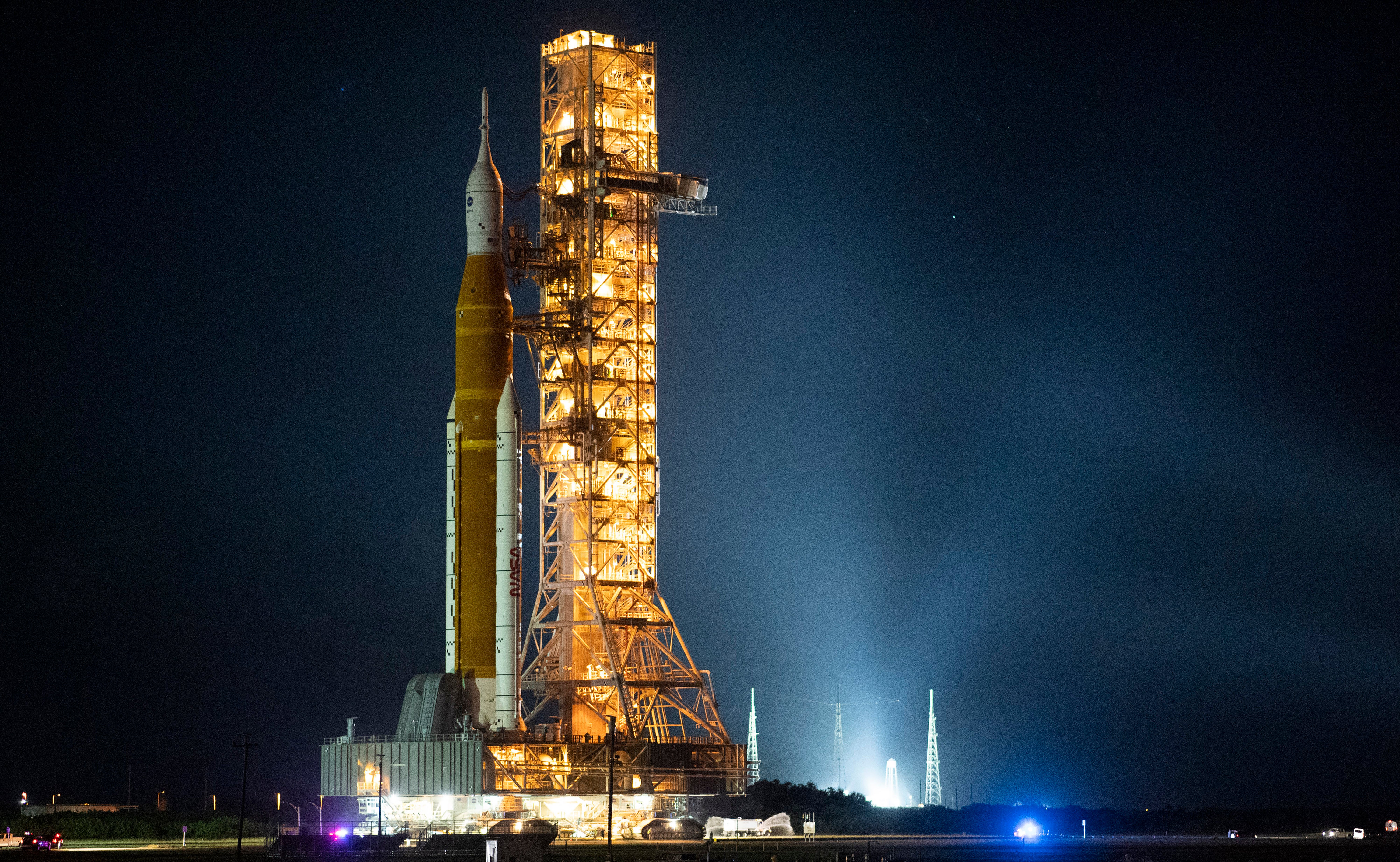Nasa’s Artemis Moon mission is a ‘go’ for Wednesday morning launch attempt
Nasa officials hope the third launch attempt will be the charmed attempt for the space agency’s big Moon rocket and its maiden voyage

Your support helps us to tell the story
From reproductive rights to climate change to Big Tech, The Independent is on the ground when the story is developing. Whether it's investigating the financials of Elon Musk's pro-Trump PAC or producing our latest documentary, 'The A Word', which shines a light on the American women fighting for reproductive rights, we know how important it is to parse out the facts from the messaging.
At such a critical moment in US history, we need reporters on the ground. Your donation allows us to keep sending journalists to speak to both sides of the story.
The Independent is trusted by Americans across the entire political spectrum. And unlike many other quality news outlets, we choose not to lock Americans out of our reporting and analysis with paywalls. We believe quality journalism should be available to everyone, paid for by those who can afford it.
Your support makes all the difference.After wrangling multiple technical challenges and dodging two hurricanes, Nasa is finally ready for its third attempt to launch the space agency’s big Moon rocket on its maiden flight Wednesday morning.
The two hour launch window for the Artemis I mission opens at 1.04am EST Wednesday morning, and Nasa ground crews are slated to begin fueling the 322-foot-tall Space Launch System rocket around 3.30pm EST Tuesday. Full pre-launch coverage of the launch will begin at 10.30pm Tuesday on Nasa TV and the space agency’s Youtube channel.
US Space Force Space Launch Delta 45 meteorologists predict weather conditions at Kennedy Space Center in Florida, where the SLS sits on launch complex 39B, will be 90% favorable for a successful launch.
Artemis I is the first test flight of the roughly $4 billion SLS rocket, which will carry an uncrewed Orion spacecraft into Earth orbit and then propel it on its way to, around and back from the Moon during a 26-day journey. The big rocket and spacecraft pair are the cornerstones of Nasa’s Artemis Moon program. They’ll carry human astronauts first around the Moon during Artemis II, and later help astronauts return to the lunar surface during Artemis III — assuming the Artemis I test flight gets off the ground.
Nasa rolled SLS and Orion out to the launch pad in early November, where the big rocket got caught by a suddenly strengthening tropical storm Nicole, later Hurricane Nicole, leaving Nasa officials only to watch as the big space vehicle endured hurricane-strength winds.
Nasa statements about the rocket’s condition post-storm indicate the rocket received only minor damage.
Nasa first attempted to launch the Artemis I mission on 29 August, but a persistent problem with cooling one of the rocket’s engines to the proper preflight temperature caused Nasa to scrub that launch. A second launch attempt followed on 3 September, but that launch was scrubbed after a line feeding liquid hydrogen propellant into the rocket sprung a persistent leak.
Following the two scrubbed launches, Nasa rolled the SLS back into the Vehicle Assembly Building — essentially a massive rocket hangar — at Kennedy Space Center for repairs. On 21 September, after rolling the big rocket back out to the launch pad, Nasa ran a series of tests proving to the space agency’s engineers that the hydrogen leak and other technical issues encountered in the first two launch attempts had been repaired.
Then Hurricane Ian appeared on the scene, pouring tropical water on any hopes of launching Artemis I in September. Nasa rolled the big rocket back into its hangar ahead of the powerful category 4 storm that made landfall in Florida on 28 September.
With storms out of the way, a hopeful forecast and past technical challenges addressed, Wednesday could mark the day Nasa finally takes its first flight back to the Moon. If the launch is successful, the Orion spacecraft will fly around and up to 40,000 miles beyond the Moon during its 26-day mission, allowing Nasa to both test the spacecraft’s systems ahead of crewed missions and deploy space satellite experiments to study the Moon and other aspects of Orion’s journey.
The biggest and possibly most important test of the Artemis I mission will come at its end, as Orion hits the Earth’s atmosphere at a blistering 25,000 miles-per-hour and tests the spacecraft’s heat shield against the 5,000 degree Fahrenheit temperatures that will result. Once slowed down by atmospheric friction, Orion will deploy parachutes to slow its final descent to the waters of the Pacific Ocean off the southern California coast.
If everything goes right with Artemis I, or assuming Nasa can learn from and fix anything that goes wrong, Artemis II will launch in May 2024 and carry four astronauts on a similar flyby of the Moon.
Artemis III, scheduled to launch sometime in 2025, will then carry four astronauts to lunar orbit, from where two astronauts will descend to the Moon’s surface in a landing vehicle built by SpaceX. They will be the first humans to set foot on the lunar surface since the Apollo 17 astronauts in 1972.
Join our commenting forum
Join thought-provoking conversations, follow other Independent readers and see their replies
Comments